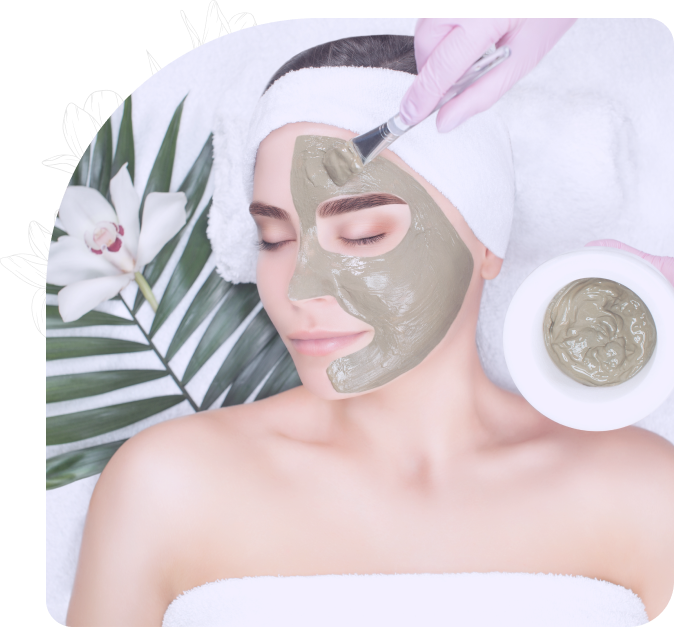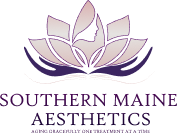Benefits Of Skin Care

Why should I see an Aesthetician?
Aesthetics is the application of various treatments to the skin, to maintain its health and vitality. Aestheticians are trained in skin wellness, helping their clients balance oil and moisture content and achieve a healthy, youthful complexion. As well as various facial treatments (described in more detail below), they commonly also perform body treatments such as salt or sugar scrubs, moisturizing or slenderizing body wraps, hair removal techniques such as waxing or threading, and hand/foot treatments to rejuvenate the skin.
A variety of treatments and products are used to protect skin from environmental hazards and combat fine lines, wrinkles, and a dull, uneven skin tone. Aestheticians are also skilled in managing conditions such as acne, rosacea, eczema, and dry skin, to name just a few. And finally, skin care treatments are wonderfully relaxing and rejuvenating. If smooth, healthy skin is your goal, visiting a skin care professional can benefit you.


Why should I see an Aesthetician?
Aesthetics is the application of various treatments to the skin, to maintain its health and vitality. Aestheticians are trained in skin wellness, helping their clients balance oil and moisture content and achieve a healthy, youthful complexion. As well as various facial treatments (described in more detail below), they commonly also perform body treatments such as salt or sugar scrubs, moisturizing or slenderizing body wraps, hair removal techniques such as waxing or threading, and hand/foot treatments to rejuvenate the skin.
A variety of treatments and products are used to protect skin from environmental hazards and combat fine lines, wrinkles, and a dull, uneven skin tone. Aestheticians are also skilled in managing conditions such as acne, rosacea, eczema, and dry skin, to name just a few. And finally, skin care treatments are wonderfully relaxing and rejuvenating. If smooth, healthy skin is your goal, visiting a skin care professional can benefit you.

What’s the difference between dermatology, cosmetology, and Aesthetics?
Dermatology is a branch of the medical profession, practiced by licensed physicians who specialize in disorders of the skin. Aesthetic practice specifically excludes diagnosis, prescription, or any other service, procedure, or therapy that requires a medical license. If you’re being treated by a dermatologist, your Aesthetician can provide treatments that complement and support what you’re having done with a Dermatologist. In addition, Aestheticians are trained to recognize early signs of many medical conditions affecting the skin and will refer you to a dermatologist in such a case.
Cosmetology is the study of beauty treatments including nail care, hair care and styling, makeup application, skin care and more. Aesthetics is one branch of cosmetology; some Aestheticians work in other branches of cosmetology in addition to their skin care practice.

Techniques and products
Techniques used by Aestheticians include facial steaming, wrapping, exfoliation, waxing, pore cleansing, extraction, and chemical peels. Creams, lotions, wraps, clay or gel masks, and salt scrubs are used. Machines may also be used to help deliver high-tech services.
Some common:
Exfoliation: The removal of dead skin cells manually (scrubbing, brushing, or using a system such as microdermabrasion), with a chemical peel (a product that causes dead skin cells to shed) or with an enzymatic product that digests dead skin cells.
Extraction: This is the process of deep cleansing the pores, either manually (using gloved hands and cotton or tissue around the fingers, with gentle pressure to remove the impacted pore) or using a metal extraction implement designed to clear blocked pores. This can also include the use of a lancet (a small sharp blade to lift the dead cells of the skin prior to extraction).
Microdermabrasion: The process of resurfacing the skin using a machine that sands the skin’s epidermal (outer) layer, using either a wand tipped with crushed diamonds, or a spray of special crystals which are then suctioned back up along with the dead skin cells. It can be very helpful in improving skin texture, fine lines and the effectiveness of home care product penetration.
Waxing: Waxing removes unwanted hair at the root. There are two different types of waxes: hard and soft. Soft wax is applied warm to the skin in a thin layer in the direction of hair growth. Cloth strips are then applied to the warm wax, rubbed in the direction of hair growth, and quickly pulled off in the opposite direction. This method is best used on larger areas of the body such as the legs, back or chest. Hard wax is used without cloth strips. It is applied warm, in a layer about the thickness of a nickel, allowed to dry and then removed quickly in the opposite direction of hair growth. Hard wax is less irritating to sensitive skin and is excellent for the bikini, underarm and facial areas.

Visiting an Aesthetician

What about home care?
Much of the success of maintaining a visible improvement after treatment depends on consistent, correct home care. Your Aesthetician is trained to select the products that will most benefit your skin, and to advise you on how to maintain your professional results between visits. Like medical or dental care, following the right daily regimen at home is essential if you are to get the most out of your visits to a professional.
Your Aesthetician
Your skin care treatments should be provided by a properly trained professional. Don’t hesitate to ask your Aesthetician about her background, training, and experience—especially as it relates to the treatment you are considering. Your Aesthetician is a professional member of Associated Skin Care Professionals. Our members have been validated as meeting their state’s licensing credentials and/or core training requirements, and agree to follow a code of ethics which ensures you’ll be treated responsibly and with the utmost respect. ASCP also provides its members with comprehensive resources that allow them to keep up with changing trends, making certain you’ll receive the most up-to-date available.


What about home care?
Much of the success of maintaining a visible improvement after treatment depends on consistent, correct home care. Your Aesthetician is trained to select the products that will most benefit your skin, and to advise you on how to maintain your professional results between visits. Like medical or dental care, following the right daily regimen at home is essential if you are to get the most out of your visits to a professional.
